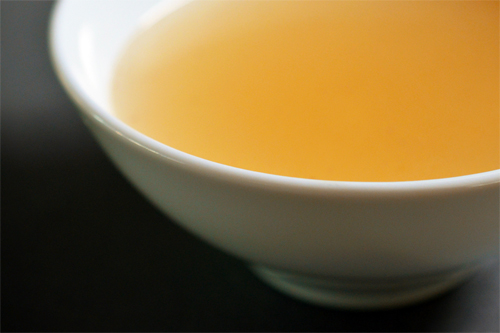Breaking Down Bone Broth
 Posted November 22, 2013 | Nutrition & Health Tips
Posted November 22, 2013 | Nutrition & Health Tips
Introduction
We often recommend bone broth or stock to our patients because we view it as a medicinal food. Broth is a time-honored remedy believed to heal what ails you. But what is the science behind grandma’s reason for telling you to eat chicken soup when you are sick?
First, let’s discuss the difference between bone broth and stock:
- Bone Broth is a nutrient-rich infusion made with animal bones (typically roasted first) from chicken, beef, lamb, fish, etc., vegetables, and sometimes herbs and spices. These ingredients are simmered in water for a long period of time (6 – 48 hours for chicken and 12 – 72 hours for beef), though the smaller the bones, the less cooking time. Once finished, the bones will typically crumble when lightly pressed, indicating that most amount of the nutrients from the bones have leached into the broth. The flavor is very rich and deep.
- Stock can be made with or without animal bones, such as with a vegetable stock, or with meat and other parts (fins, feet, hooves, knuckles, neck, etc.). For stock made with bones, the same method is used as with bone broth, however the cooking time is much shorter (2 – 3 hours for chicken and 6 – 8 hours for beef). Fish stock typically takes only 1 – 1 ½ hours. The flavor of stock is lighter but the liquid still contains many important nutrients such as minerals and gelatin.
Why do we use Bone Broth?
Because it is filled with so many nutrients that promote health! Bone broth aids the immune system, enhances digestion, strengthens our bones and teeth, supports our joints and skin, and is being used as part of the GAPS Diet (Gut and Psychology Syndrome).
Let’s break is down: here are the main components of bone broth and why they are so good for us.
- Bone Marrow is the sponge-like tissue that fills the center of larger bones in humans and animals. Marrow produces red blood cells, white blood cells, platelets, and has a high concentration of various important stem cells. White blood cells are necessary for immunity, red blood cells carry oxygen throughout the body, and platelets are involved in blood clotting.
- Cartilage is formed by the proteins collagen and elastin and contains other substances called glycosaminoglycans. Important for joint health, the glycosaminoglycans glucosamine, chondroitin sulfate, and hyaluronic acid also help with proper blood clotting and strengthening our loose and dense connective tissue. This connective tissue holds our organs in place; surrounds blood vessels and nerves; forms muscles, tendons, and ligaments; is part of our skin; and holds the cells of our digestive tract together.
- Gelatin, known to sooth the digestive tract and heal mucous membranes, is a protein formed from the denaturation of collagen. It contains certain amino acids such as glycine and proline. Glycine plays an important part in the function of the central nervous system, liver detoxification, production of DNA and RNA, and improves digestion. Proline aids in the formation of collagen and, especially when paired with vitamin C, supports good skin health.
- Minerals such as calcium, phosphorus, magnesium and potassium are all found in bone broth. Knowing these minerals support our own bone health, they also support the health of our teeth. Interesting fact: provided that the diet has sufficient minerals, the saliva will have the necessary minerals to interact with the tooth enamel to remineralize the teeth.
How to use Bone Broth
Homemade broth can be used in making soups, stews, sauces, gravies, reductions, and can be used to cook rice or other grains. It can be added cold into smoothies or juice or wherever liquid is called for in a recipe.
RECIPE:
Homemade Chicken or Beef Bone Broth
Ingredients:
Beef bones (2 large marrow bones, roasted) or Chicken Bones (1 frame of a roasted chicken)
1 onion, chopped
2 carrots, chopped
2 celery stalks, chopped
Water
1 teaspoon apple cider vinegar
Optional ingredients: ½ bunch of parsley, 4 leaves kale, 1 teaspoon sea salt, 1 teaspoon peppercorns, 2 cloves garlic, or additional herbs or spices to taste.
Directions:
Put all ingredients in a crockpot and fill with water until full. Set on low and allow to cook for 12 to 24 hours. If you had meat on the bones, you can allow the meat to cook in the crockpot and then take it out and save for adding to soups. Strain and keep in fridge. It will keep for at least 1 week. You can also freeze extra and thaw as needed.
Bonus Recipe: Perpetual Bone Broth
 Posted November 22, 2013 | Nutrition & Health Tips
Posted November 22, 2013 | Nutrition & Health Tips
This Post Has 0 Comments